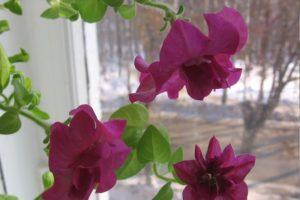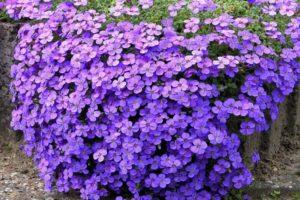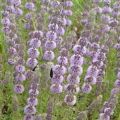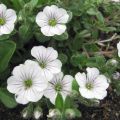Description of the marsh marigold variety, planting and care features
The beautiful yellow flowers of the marsh marigold have become frequently used in recent years. Early flowering and luxurious foliage allow you to decorate the shores of reservoirs and flower beds with it. In addition, marigold is known for its medicinal properties.
Description and features
Marsh marigold is a perennial crop that belongs to the buttercup family. Her root is filamentous, in the form of a bunch. The height is usually 40 centimeters, but if it grows where there is a lot of moisture, it can grow taller than a meter.
The plant is distributed mainly in the Russian Federation, but sometimes it is found in countries with cold climates, for example, in Iceland and countries located on the Scandinavian Peninsula.
This plant is considered poisonous and is known for its medicinal properties.
It has several names:
- cow color;
- oil color;
- greasy color;
- icteric color.

Leaves are dense and leathery, with rounded edges. Kaluzhnitsa loves when there is a lot of moisture, her favorite habitats are meadows, the banks of reservoirs or marshy areas. The stem is straight, glabrous, grows poorly. The part of the leaves that is under water has a red-purple color. Flowers are golden yellow, double.
The seeds appear in September.
Outdoor cultivation
This plant is not grown in flower pots or greenhouses. For this, only open ground is used.
Landing dates
Seeds are planted in the ground in April or September.
Selection and preparation of seed
If grown from seed, stratification is necessary. To do this, they are kept at 10 degrees of heat for a month. After that, 2 months - at 18-20 degrees. And only then they can be planted in the ground.
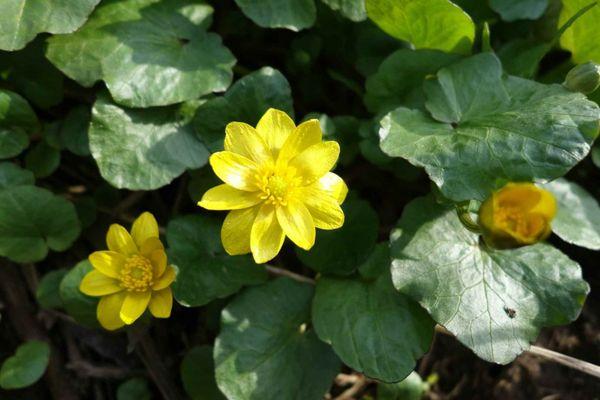
Soil preparation
The soil in which the marigold is planted must be moist. Before planting, you need to fertilize with organic fertilizers.
Landing scheme
The distance between seeds should not be less than 30 centimeters.
Care
Kaluzhnitsa is an unpretentious plant that does not require special additional care. It has good frost resistance, likes good lighting, although it can grow with its lack.
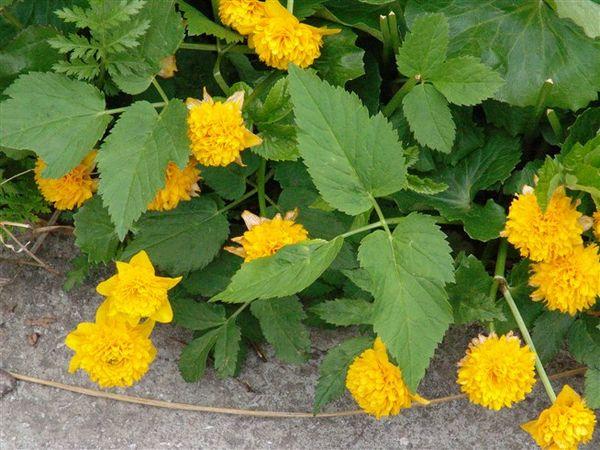
Loves moisture and additional watering. If it receives less water, it gradually begins to bloom less. Within three or four years, the bush grows strongly, so it is necessary to plant it on time.
Watering
The plant needs abundant watering to grow. The soil in which it grows must constantly maintain its moisture. In hot weather, watering should be more frequent than usual.
Loosening and weeding
Weeding is performed as the weeds grow. Loosening is desirable after precipitation so that the outer layer of the earth does not turn into a solid crust after drying.
Top dressing
For feeding, the marigold is supplied with organic fertilizers. This should be done in this way:
- When early spring comes, you need to apply fertilizer to the surface of the ground next to the plant.
- In late autumn, when feeding, it is necessary to mulch the soil at the same time as feeding.

Diseases and pests
The marigold plant is poisonous, and this protects it from most diseases and insect pests.
Transfer
After 3-4 years of growth, the bush loses its decorative appearance, while usually transplanting or reproducing by dividing the bush in order to give it a new life.
After flowering
When the marigold fades, it is recommended to cut the flowers. This increases the vigor of the plant's lush green foliage.
Collection and storage of seeds
It is not customary to collect and store marigold seeds, because they have a low germination capacity. They usually appear in June and try to land them as soon as possible.
Preparing for winter
Since the marigold is resistant not only to low temperatures, but also to frost, it does not require special preparation for the winter period.
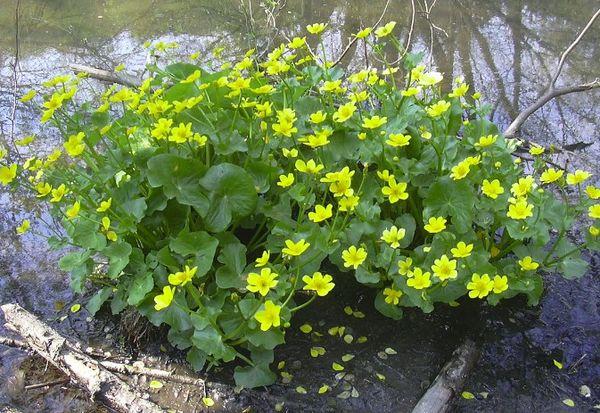
Reproduction
This plant is capable of multiplying using a vegetative or seed method. It is grown outdoors.
Seeds
Seeds from marigold can be obtained twice a year: in spring and autumn. First, they are stratified, then planted. Kaluzhnitsa, grown from seeds, blooms in the third year.
Dividing the bush
To use this method of propagation, you need to dig up the bush in early spring before it begins to bloom. It is divided into several parts and planted separately. The distance between the bushes is 30-40 centimeters. In order for them to take root, they are watered and placed in the shade. The latter is necessary until the moment they take root. This plant tolerates the transplant procedure well.
You can use cuttings propagation. To do this, find a branch with a bud and bend it to the ground. After it takes root, it is detached from the mother plant and transplanted. Watering must be ensured for successful germination.
Using
The marigold can have a variety of uses. What is valuable in medicine is that it can help cure many diseases.

Kaluzhnitsa can delight the audience and as one of the colors used in landscape design.
This plant, despite its toxicity, can also be used in cooking, provided it is properly prepared.
Medicine
Although marigold must be used carefully and only with the permission of a doctor, it can nevertheless be used in the treatment of various diseases.
Beneficial features
The plant is used to treat whooping cough, asthma, fever, dropsy, and bronchitis. Helps with diseases of the urinary tract, rheumatism, scrofula. Eases menstrual pain. It is effective against inflammation. Helps heal wounds, damaged or healed skin.
Since we are talking about a poisonous plant, for medicinal purposes it is necessary to take a small amount of it.
It can be used as an external remedy.
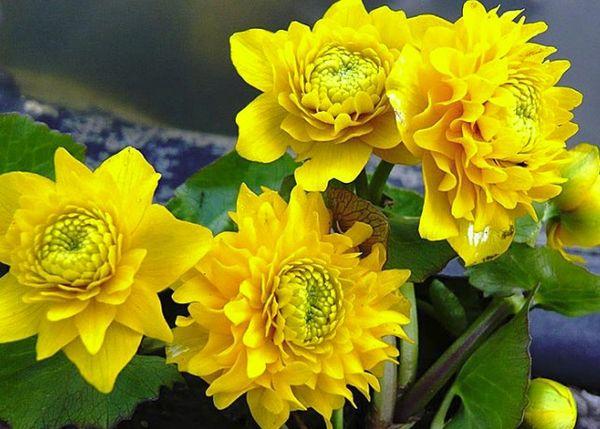
For medical purposes, you can take stems, leaves, as well as buds of flowers that have not yet blossomed. Marigold juice is an emetic and laxative.The plant contains vitamin C, linoleic acid, carotene and flavonoids. Saponin is present in the roots.
Despite the large number of useful properties, the plant is little used in medicine. This is primarily due to the fact that it is poisonous. Despite this peculiarity, it is capable of providing many benefits. It is used as a medicine for the treatment of gallbladder diseases, scurvy and neuroses. With the help of marigold, warts can be successfully treated.
When used together with plantain, you can get a medicine that makes it possible to cure a cough.
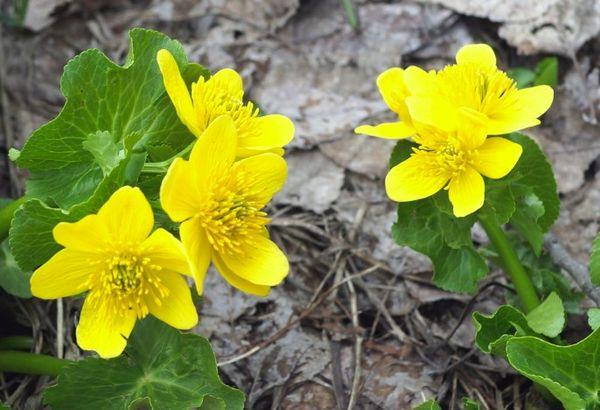
Contraindications
Before using marigold for treatment, you should consult your doctor. Due to its toxicity, when consumed, you can harm yourself.
In order to avoid unpleasant consequences, it is necessary to use the exact dosage of such a medicine. It can cause individual intolerance.
It is forbidden to use marigold for treatment during pregnancy or when feeding a child.
In some cases, complications arise during admission:
- Severe abdominal pain
- Nausea, and in some cases, vomiting;
- There may be diarrhea;
- Skin irritation occurs;
- Sometimes the mucous membrane is irritated.
Landscape design
Kaluzhnitsa is used to decorate the coastal zone of man-made reservoirs. Also grown in flower beds, where it looks beautiful in combination with other types of flowers.
